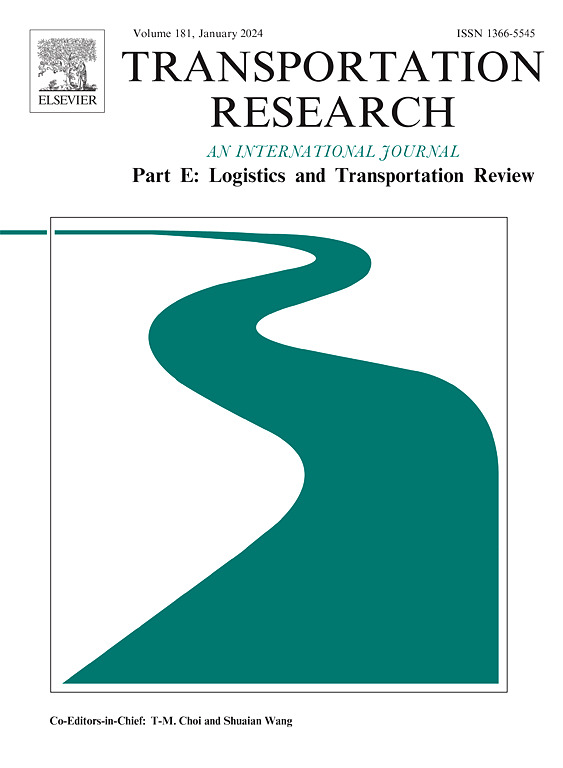Real-time vehicle relocation and charging optimization for one-way electric carsharing systems
IF 8.3
1区 工程技术
Q1 ECONOMICS
Transportation Research Part E-Logistics and Transportation Review
Pub Date : 2025-02-01
DOI:10.1016/j.tre.2025.103996
引用次数: 0
Abstract
This study investigates a real-time vehicle relocation and charging strategy (RT-VR&CS) problem for the one-way electric carsharing services considering demand dynamics and practical nonlinear charging profile. The RT-VR&CS problem aims to develop a fast and robust algorithm to determine the real-time relocation and charging strategies for electric vehicles (EVs) with the goal of maximizing the profit of carsharing operators. A dynamic algorithmic framework based on a rolling time horizon is first established. Specifically, the entire planning horizon is divided into a series of sub-horizons, and a static vehicle relocation and charging strategy (S-VR&CS) problem is subsequently addressed over each sub-horizon in regard to the latest rental information known up to the beginning of the sub-horizon. For each static problem, we employ a set-packing-type formulation and a column-generation-based solution method. In particular, a multi-label method is developed to generate activity trajectories (i.e., columns) incorporating vehicle relocation and charging strategy for the first static problem, whereas the activity trajectories for the subsequent static problems are efficiently generated in an online environment by leveraging the existing activity trajectories generated for the previous static problem and employing a reactive column generation process. Numerical experiments on randomly generated instances and a case study based on a one-way carsharing company in China, i.e., EVCARD, are conducted to demonstrate the efficiency of the proposed solution method. The impacts of algorithm-related parameters, the demand dynamism, the service charge, and the relocation cost on the performance of one-way electric carsharing systems are also analyzed.
求助全文
约1分钟内获得全文
求助全文
来源期刊
CiteScore
16.20
自引率
16.00%
发文量
285
审稿时长
62 days
期刊介绍:
Transportation Research Part E: Logistics and Transportation Review is a reputable journal that publishes high-quality articles covering a wide range of topics in the field of logistics and transportation research. The journal welcomes submissions on various subjects, including transport economics, transport infrastructure and investment appraisal, evaluation of public policies related to transportation, empirical and analytical studies of logistics management practices and performance, logistics and operations models, and logistics and supply chain management.
Part E aims to provide informative and well-researched articles that contribute to the understanding and advancement of the field. The content of the journal is complementary to other prestigious journals in transportation research, such as Transportation Research Part A: Policy and Practice, Part B: Methodological, Part C: Emerging Technologies, Part D: Transport and Environment, and Part F: Traffic Psychology and Behaviour. Together, these journals form a comprehensive and cohesive reference for current research in transportation science.

 求助内容:
求助内容: 应助结果提醒方式:
应助结果提醒方式:


